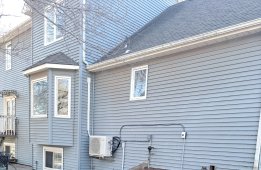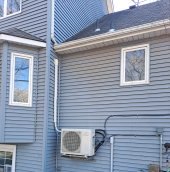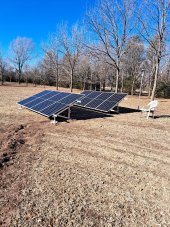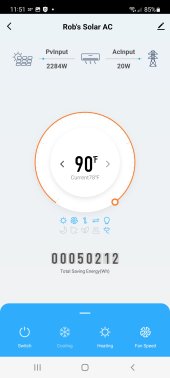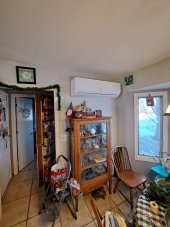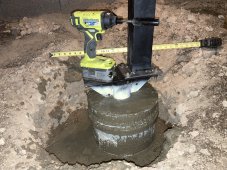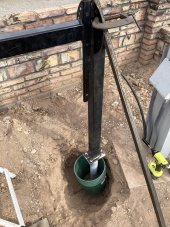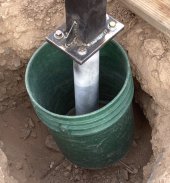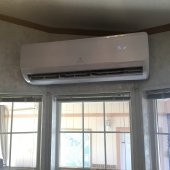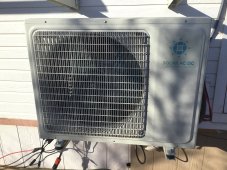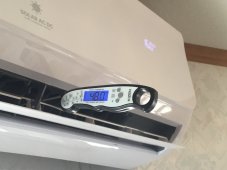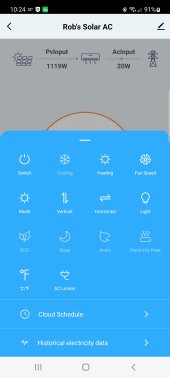What am I missing here, this unit seems like a bad choice if a person is looking for optimal electrical efficiency?
I'm looking at building an off-grid cabin and will be using solar for power and a split unit for heating/cooling. I'm approaching this as: should I take some panels off the main system and connect them to this split unit. I think the answer is no.
The minimum DC voltage is 90, so it must be direct connected to solar panels. Any time I'm not needing heating/cooling, those panels would be unused. So when I need heating/cooling, it would be more efficient. But when its not running, I have a 100% loss on the panels connected to the split unit, right? I suspect I'm better off to connect all the solar panels to the charge controller and batteries so I can use all their power the entire time sunlight is available (just losing some conversion when the split unit needs to run).
If this unit would run on 48vdc, so I could connect it direct to the batteries, this would be an extremely appealing choice. In that case all my solar panels can be devoted to a single solar system and the split unt would draw DC from the batteries for efficiency.
This unit seems great for scenarios like:
- you have no solar and would like a split unit to be solar powered without the cost batteries, charge controller, etc.
- your solar system is underpowered and you can't cost effectively add panels without upgrading a lot of infrastructure.
It just doesn't seem worthwhile for other scenarios.
Seems like ?Crickets? ? ? on this product, really?



